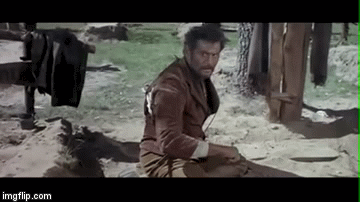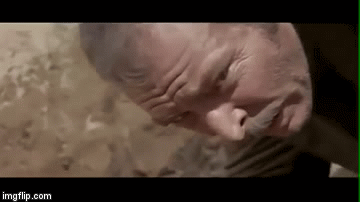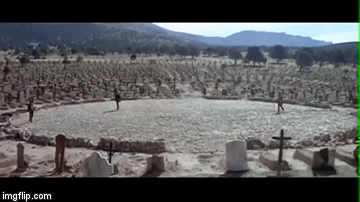Sunday, 30 October 2016
Saturday, 29 October 2016
Ultra Short Film Proposal
What is your genre?
The genre for our ultra short film will be British Realism, with the sub genre being thriller. We want the audience to constantly sit on edge whilst also really relate to what we are showing them. We feel that the success of the film will stem from the emotional connection the audience has with the charcaters. We feel that our film is perhaps less about the plot line and more about the emotions that each character goes through. Each scene is based on the decisions that our characters make, which perhaps is the ultimate message we aim to pose the question to the audience about why we make certain choices in this world and what purpose do they carry. The film uses many elements of British Realism through its use of drugs, and the ease of obtaining them and further, by exploring the fragile relationship he has with his girlfriend, it shows the grit and struggles of life, which is something our audience would really relate too.
Who are your characters?
Our characters consist of 1 female and 3 males. The main character will be a white younger male, addicted to drugs with a fragile relationship with his girlfriend. His girlfriend is a white, long brown haired younger woman, who is having an affair with another man, she is on edge with the relationship and can not understand the position she is in. Our drug dealer character will be a black male, slightly older then the other characters, he goes about his business playing as a side character. Lastly we have another male, similar height and build to our main character, which will only appear for one scene. He is the lover which simply knocks on the house door of the girlfriend.
What is your setting?
The setting for our film will be east London, present day, we wanted to film something that we as a production crew knew well, thus being able to reap all of the resources available to us. The genre has more decided our setting for us, we felt that to make a successful British Realism film we would need to make it very relatable for the audience which would be to set the film in present day. We will be using a house to mostly film, we need various locations such as the bedroom, front door, kitchen etc to film the majority of the indoor scenes. In terms of any filming from the outside we only need to use Seven kings park for the flashback scene, and the high road for when our character starts to walk.What is your storyline?
The plot for our film will be a mans journey and struggle through drug addiction, and his fragile relationship with his girlfriend. He must decide who he will walk too, whether it will be his drug dealer or his girlfriend, however he does not know that she is cheating on him. We start the film with a fast paced montage, where we see our main character on drugs and the high he feels. He will then wake up on the side of the road, where he receives 2 texts one from his girlfriend and the other from his dealer. We will then use a motivated cut to go into a flashback scene of when he was happy in his relationship. As we see him walking down the road with his final destination unknown, there will be some crosscutting, between his girlfriend getting ready to go out and the dealer selling to other people. A man who we think is the main character then knocks on a door that his girlfriend opens, but it is not the main character as we reveal she is cheating on him. Instead he chose the pathway to more drugs as we enter the encounter scene, between him and his dealer. The film ends with a split screen on one side we have his girlfriend, crying distraught about her life decisions, and on the other side we have himself doing drugs and ruining his life. Whilst we will start the film at a fast pace the majority of the film will be a slow pace. This enables us to dwell on the emotions that our characters go through. Our main concept concentrates more on the decisions a person makes and why. Not only do we aim to portray the ease of drugs but also the little world/bubble that they have created for themselves, which is something that every viewer can relate too.
What is your narrative ?
Our narrative will be a more non-linear format, whilst it does tell a story it wont be a standard sequenced film. We dont want to create confusion for the audience with the complexity of our film, but equally we want events to be scattered and we want to constantly show something new to the audience. Our hope is that this will keep them on edge and they can really connect emotionally with the characters created. We chose to have a flashback scene specifically to keep the film more non-linear, we felt that by scattering memories and keeping the film very ambiguous meant that the audience would be compelled by the emotional ties they have with the characters, to ultimately create a successful film.
How will your film incorporate all the Section A techniques?
The opening of our film will consist of a fast paced montage, denoting the mind and acts of our main character under the influence of drugs. We want to really incorporate a fast paced editing rhythm within the montage to enhance the effect of drug use to the audience. The slow paced rhythms will happen when we release the characters real struggles, as he walks ambiguously to either the drug dealer or his girlfriend is when a very slow pace will happen. In terms of transitions, of course there will be cuts that run throughout, but we aim to use a variety of transitions eg fades and dissolves during the flashback scene. We aim to use the 180 degree rule, shot-reverse-shot and cutaways in one of our last scenes, the encounter scene. Here our main character will be sitting with the drug dealer in his room, talking and taking drugs.
How will your film incorporate at least two of the Section B techniques?
We will be using jump cuts during the scene where our main character will be walking almost endlessly down a road that will take him to either his dealer or his girlfriend. Through this scene we will use crosscutting and parallel editing techniques to show his girlfriend getting ready for what seems like a date night and to also show his drug dealer constantly on the phone, and selling to various people. We will further use a motivated cut during the first scene of the film, where our main character is going through his phone, we see him looking at his phone, then cut to the phone and then cut into a flashback scene where we see him and his girlfriend happy. Furthermore, we will cut to a soundtrack during the crosscutting scenes, they wont be particularly fast cuts to the beat but rather we want to have a slower song that can distinguish the cuts between the two scenes.
Saturday, 22 October 2016
Saturday, 15 October 2016
Purposes of editing case study: The Good The Bad and the Ugly
Storytelling
Withholding information (7:47) (8:21)
The conventions that are used to show storytelling and to creates a development of drama, is withholding information we see two elements of this techniques used one is use the first is used at 7:47, where Clint Eastwood say to Eli wallach that we knew that there was no bullets in the gun, as Eastwood Characters held this information from the audiences. where else we see this techniques used is at 8:21 where Eastwood knew where the money was, as he has known which coffin the money was at. The purpose of this use was to create drama, is was to create mystery to the audience, then was told to the audiences and reviled of where the money was and if there was any bullets in the gun.
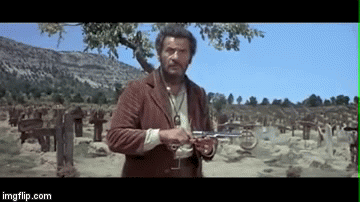 |
| 7:47 |
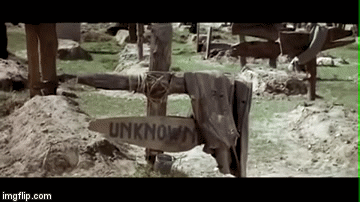 |
| 8:21 |
The conventions that are used to show storytelling and to creates a development of drama, is withholding information we see two elements of this techniques used one is use the first is used at 7:47, where Clint Eastwood say to Eli wallach that we knew that there was no bullets in the gun, as Eastwood Characters held this information from the audiences. where else we see this techniques used is at 8:21 where Eastwood knew where the money was, as he has known which coffin the money was at. The purpose of this use was to create drama, is was to create mystery to the audience, then was told to the audiences and reviled of where the money was and if there was any bullets in the gun.
Status of the actors shown is cuts and the duration
What else we see the status of the characters presented is at 0:21. we can see that there are three characters presented, which are Clint Eastwood, Lee Van Cleef and Eli wallach. WE get to see the level of importance of then within this scenes. what we see first is that the durations of each shot describes the each characters personality. we see fist Clint East wood where we see that the durations of shot are longer as their are a couple of frames longer then the other two characters, what this tell us about Clint East wood character is that he is clam in the situation, then we see that Lee Van Cleef shoots are seen to snap off him quickly what this tell us that his character is seen as aggressive and the Eli wallach character has a normal pace cuts which shows a status of nothingness.The effect that this created to the audience is that they can see the conditions/mood that the characters are in and how there feel to each other, it allows them to understand the characters more.
Combining shots into Sequences
Continuity/seamless
The Good The Bad and The Ugly uses continuity editing through out this scenes but where it is used with precised accuracy is at 2:10, were we can see the stand off winning shooting the looses into is grave. as he shoots him with a mid shot when there is a seamless cut to the villains being his with the bullet and falls into the grave, why this is used is to create a flow of the scenes and to make scenes to the audience. what continuity does is that it makes invisible cuts between the actions, the purpose and the effect of why seamless cutting is used in this scenes it to allow the audiences to understand what is happening on screen, it was to create fluent flow for the audience to view, this techniques is used to follow the character in a clean order.
180 degree rule & Shot Reverse Shot
What we also see in The Good The Bad and The Ugly scenes is 180 degree rule used and shot revered shot techniques used within the stand off scenes. why the 180 degree is used it to lay out to the audience of where each of the characters are standing. where we see this 180 degree used is at 4:27 of where we can see all three characters looking at each other. as each of the shot are placed in a position that does not mix up the order of where the characters are standing. Where wee see shot reverse shot used is at 0:20 where we can see the enemies and the heroin having a conversation about the money., the first shoot first is placed on the heroin and then is placed on the enemies then is placed back on the heroin.The purpose of why 180 degree is used is to make the audience understand of where each of the characters are standing, it to tell the audience of where the enemies. The purpose shot reverse shot is to mimics the audience reaction to a conventions. the effect of this is to show the relationship between the two characters. this is to create realism in the situation.
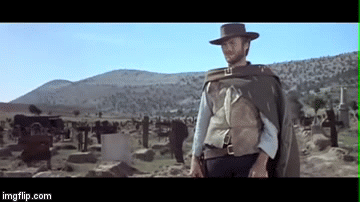 |
| 180 degree rule |
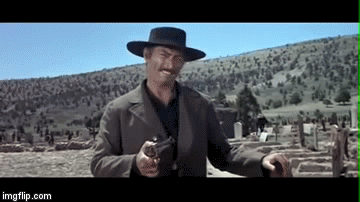 |
| Shot revered shot |
What we also see in The Good The Bad and The Ugly scenes is 180 degree rule used and shot revered shot techniques used within the stand off scenes. why the 180 degree is used it to lay out to the audience of where each of the characters are standing. where we see this 180 degree used is at 4:27 of where we can see all three characters looking at each other. as each of the shot are placed in a position that does not mix up the order of where the characters are standing. Where wee see shot reverse shot used is at 0:20 where we can see the enemies and the heroin having a conversation about the money., the first shoot first is placed on the heroin and then is placed on the enemies then is placed back on the heroin.The purpose of why 180 degree is used is to make the audience understand of where each of the characters are standing, it to tell the audience of where the enemies. The purpose shot reverse shot is to mimics the audience reaction to a conventions. the effect of this is to show the relationship between the two characters. this is to create realism in the situation.
Creating Pace
Editing Rhythm
The
Good The Bad and The Ugly has a slow pace at editing rhythm we can see this at 3:44 were we see a long shot/establishing shot of the three character
positioning to go into place for their stand-off. The purpose of why a slow
editing rhythm is used here is to show an intense situation that is gradually
increasing from the characters, the purpose of this shot is to keep the
audience engaged and interested. This still shot shows a feel of what speed the
characters are moving at, which emphasises the characters movement as there is
nothing else moving in the background. The effect this editing rhythm has on the
audience is that they feel the emotions the characters are going through and their
mental state, the long shot shows they have no way of getting out of the
stand-off due to the location of the scene.
Cutting to the beat and Montage
The second purpose of creating pace that we see in The Good The Bad and The Ugly, is the editing technique of editing, montage and cutting to the beat. Were we can see this placed is at 6:27, what we can see is that quick cuts made from character and character and weapons, this is linked in with the soundtrack that is placed above where each shot is cutting to the beat on. What this element does is it gathers high intensity, to lead to a climax editing, to the main character shoot the villain. The purpose of why montage and cutting to the beat is used is to show the emotion that the creates are going through, what this also shows is the mental state the the character is going through and how fast there heart is beating at that moment of there life of death situation.
The second purpose of creating pace that we see in The Good The Bad and The Ugly, is the editing technique of editing, montage and cutting to the beat. Were we can see this placed is at 6:27, what we can see is that quick cuts made from character and character and weapons, this is linked in with the soundtrack that is placed above where each shot is cutting to the beat on. What this element does is it gathers high intensity, to lead to a climax editing, to the main character shoot the villain. The purpose of why montage and cutting to the beat is used is to show the emotion that the creates are going through, what this also shows is the mental state the the character is going through and how fast there heart is beating at that moment of there life of death situation.
Saturday, 8 October 2016
The Development of editing
Before Editing
Before Editing existed, this was the first ever moving images called The output of the light plant in lyon, this was because of the invention of the video camera called cinematograph, this was shown in the Lumiere Brothers work. the invention of the cinematograph was the first mile stone of the film industry's future, the ability to record and capture `and ablie to view later on projector.
.
The first people to pioneer before editing was by two brothers called Louis (aged 33) and Auguste (aged 31). The Lumiere Brothers done a single shot film clip lasting 46 seconds that showed people that are coming out of a factory, the film that was shot was in a ratio at 4:4, as it was viewed as squared format, there was no colour or sound and was black and white. The quality of the footage was poor and grainy, but understandable as it was the first film shot by the Cinematograph it was a three in one as it recorded, developed and projected motion film.
.
1895, the Lumiere Brothers made history of capturing live action, this was a massive milestone before editing simply because it was the first ever film that was shot, the footage lasted 50 seconds and was done on 17 meters of film reel and today with years of developed technology this idea of recording motion is placed in nearly every electronic device. In total the Lumiere Brothers where to go on to make 10 other films.
In camera Editing
Camera Editing was yet another milestone for the development within the film industry. Robert W Paul created the first ever multi shot video, he was the first person to shoot a film with more then one shot within film, he did this by starting the camera to film and then stopping and moving the location of the cinamatograph then restarting the camera, This type of filming meant that the film reel did not have to be edited by someone physically cutting parts of the film reel and reattaching where they want the film to continue from. there was restriction to film continuously as film reels and other equipment was very expensive.
The pioneer to discover in camera editing was Robert W Paul, at 29 years old he had pioneered this techniques. in his short film called "come along, do!" which was the first film to have more then one shot within film. at 0:07- 0:43 the first shot was shown of the two couple that are sitting on a bench outside of the museum, then we see a next shot of the couple that are inside of the art museum, as this was the first every film that was to included more then one shot. this short film still told a story even though it had no sound as he used labelled signs (art section) to let the audience know there they were going when entering the doors to their right. Robert W Paul shot 11 film before he had pioneered this editing techniques
Why this was a huge impact to the film industry's future as it allowed filmmaker to film multiple shots and place then into film, This was discovered and introduced by him in 1898. This editing techniques with a modern development is gone on to be placed in every movie in the future to come. This techniques is developed to several hundred multiple shot that are placed in film.
Following the action
Following the action was a editing techniques that was done by George albert smith, as he was the first one to pioneer the point of view shot, and the continuity of action. What he did is that he added filter into the reel to create the point of view style shot. Also the continuity of action was done be follows to action that the actor's did in the scenes.
The first person to pioneer the editing technique following the action was George albert smith, he had pioneered this at age (35) in 1899. He was the first person to complete a post production effect, this was see at 0:17 of where the shot of the women ankle but is shown through a silhouette, it shows it through a cirler view. George albert smith had shot 7 other film before he had discovered the editing techniques of Following the actions.
Why following of actions was a huge impacts on the future of film industry is because it allowed filmmaker to create content that followed and made sense to the audienec without any confusion. This was also a huge impact because there was a technique that was used to show point on view as t was introduced as this was gone on to be used in scenes in American Sniper or a whole movie such as Cloverfiled.
Multiple point of view
Multiple point of view shot, is an editing techniques that used multiple different shot within a film, it was pioneered by James Williamson, as he was the first that was to create a multi shot movie , as he used 3 shots.
The first person to pioneer the editing techniques of multiple point of view in 1900 was James Williamson at age 45. where this editing technique was first placed was in the work "Attack on a China Mission".What had been pioneered in this film was the multiple point of view shot, 180 degree rule and match on action. We had see three different point of view first introduced first was shown at 0:01 an establishing shot, the second view was shown at 0:06 of the people of the house fleeing to shelter, then we see the third shot at 0:47 of the soldier coming in to fire at the house. We also see the 180 degree rule shown within the movie at 0:49 and 0:55 where the soldiers and house are placed on one side of the screen. We also see the introduction of match of action we see this at 0:50 to 0:51 where the soldier run out of shot towards the house and there is a cut to the soldier running into to the shot of the house.
Jamees Williamson had shot 5 other film before he had discovered the multiple point of view. what impact this discovery had created to the future of film industry is that it allowed filmmaker to tell a story will different view. as this allowed to audience to believe that more then one camera where used. how this is developed to the present day is actions is shots on multiple camera and technology and build of the came have got stronger can and is shown through different view to emphasis the impact.
Shot variation
Shot variation was a development of creating more then one sot shot angle in film making, we see that the close ups has been develop and create depth into the actors feeling, it had indicated to the viewer on how to feel.
DW Griffiths at age 30 was the first person to pioneer the shot variation of editing. this was shown in his work of The Birth of A Nation. This was first shown in 1915. it had a budget of $100,000 and had made a estimated earning box office figure of $50-$100 million. When the film was released it was 133 minutes. what was inducted was the variety of shots , in the film we had see our first ever close this was used to create depth into the actors acting you can see this at 3:28 of a close up of a women. We can also see that he had introduced other transition such as dissolved. Dw Grifiths had shot 2 film before he had pioneered this editing technique.
Why DW Griffiths discovery was a huge impact of the future of the film industry was because it allowed other filmmaker to tell a story with emphasis of acting through the variety of shot.What other impact this created was it developed an idea of telling a full story , as this was the first every feature length film that was shot, as this created a an average time on film. which is used in the present day as 1:30-2 hour film
Manipulation of diegetic time and space
The manipulation of diegetic time and space was , was a first to create a editing techniques of montage, cutting to beat and the source of editing to a specific paces, this was to develop the idea of match the seed of the actions to the pace of the editing cuts.
Where we see manipulation of decgetic time and space first used is in the film Battleship Potemkin from the scenes Odessa Step the film was 75 minutes long, This is were we see the first ever editing techniques of editing paces, we saw a fast editing past this was matched with the actions on see where people where tumbling over the stair and also the rolling down of the pram down the stair we see this at 2:32. we also see the use of cutting to the beat because all of the cuts that are made are match with the beat that are shown. This rule was discovered by Sergei Eisenstein at age 27 in 1925 he had shot two other movies before he had discovered this editing techniques.
Why Sergei Eisenstein discovering was a huge impact for the future of film industry was because he had had created an editing techniques that was to go on to be highly used in music video and film. This techniques was represented to show the audience what the intensity of the scenes and what the action of screen contained or the beat of the music.
Film,video
Film to video moving to digital format of editing was the transitions if film reels to digital format. as this allowed for the quality of film to be more HD for the audience to view. This also allowed for the format to be worked on to create visuals effect.
The first ever movie to pioneer the the development was Once Upon A Time In Mexico. as this was the first film to be filmed in digital format, which allowed for a better quality viewing to the audience. This format was introduced in 2001 and now is used in ever film format, but before that every other film was done on reels.
Why film to video was a huge impact on future of film making is that it allowed industry to create films that were in high definition to the viewer. As this also impacted the audience view on the film as there could see a clean and defined image on screen in the cinema. This also made is easier for editor to used as digital could have been placed in computer software much quicker and easier and copied for back up.
Analogue
Analogue was the first every editing tool that was to be invented and used in film production, it was the first piece of machinery to be used to help edit and cut film up, as it allowed to forward and reverse and cut film to the right cut through a live view.
The first ever person to pioneer analogue editing system was Iwan Serrurier, the machinery was called Moviola. it has cost $600 which is equivalent to $20,000 today, which had meant very little were sold. The machine was purchased by the film company for example Warner Brothers and Universal studio. This editing software was invented in 1924 where Iwan serrurier was 46 year old. This editing technology is still available till this day in Hollywood.
What impact this development of editing techniques had on the future of film making is that is allowed the process of film to be edited to me much quicker,this was due to the function and accesseablity of the editing machinery. as this allowed to view the footage live when editing. and make a cut seamlessly instead of of hand cutting the footage and then reattaching the two cut back together.
Digital
Digital, was the first editing process that was completely developed on a software, as it was is distribution editing, as it was completely digital , which replaced the analogue editing techniques as this was much more accessible to use.
The first editing software was cmx 600 it was the first every computer editing software, which was introduced in 1971. some of the first ever films to be edited used non liner editing was Star wars and Terminator. there were the movies to using visual effect. The first ever 3D animations film was Toy story which was introduced in 1995 which was a huge revolution in animation as this allowed the future of film making to create more advance visual effect into there films.
The impact that Non linear editing created on the future of film making is that it allowed other filmmaker to create advance visuals to content to make action impossible to be possible.
This is also allowed filmmaker to edit movie much faster. This also allowed them to store footage on hard rive and make copy. it allowed editor to be more free instead of limited option to the cut there make.
Subscribe to:
Comments (Atom)




